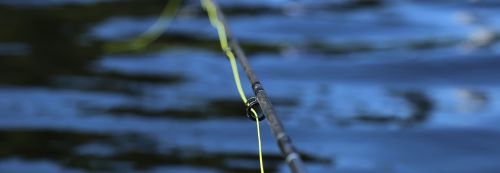Technology in fly lines has made many rapid advancements in recent years. With sink rates becoming faster and tapers being designed for more specific purposes, it is easy to get lost in the world of fly lines. While the sky’s the limit on the number of fly lines one can own, you can handle almost any fly-fishing situation with just three.
Weight-Forward Floating Line
Weight-forward floating lines are the most commonly used in fly-fishing. These tapered lines, with the thickest and heaviest part of the line (the head) towards the front of the line, make casting easier (though the presentation of dry flies less delicate). Still, their versatility for both surface and sub-surface fishing make them the most important line to have in your boat. Flies that are commonly fished on a weight-forward floating line are leeches, chironomids, bloodworms, mayflies, damselflies, and shrimp. The line’s ability to handle a bulky strike indicator (especially when using chironomid patterns) allows you to precisely control the depth at which your fly is sitting.

Intermediate Sinking Line
Full intermediate sinking lines descend through the water at a rate of less than two inches per second. These are very useful lines for fishing water that is less than ten feet in depth, or for fish that are feeding high in the water column. Intermediate sinking lines can be fished in very shallow water without hanging up on the bottom, and are great for fishing parallel to drop-offs. Typical wet-fly patterns fished using intermediate sinking lines consist of leeches, scuds, water boatmen, mayfly and damselfly nymphs, as well as many attractor patterns.

Fast Sinking Line
Fast sinking fly lines are great for deeper water that is not suitable for fishing with a floating line and strike indicator. Anglers will use these lines very effectively to hang chironomid and bloodworm patterns directly beneath the boat. Fast sinking lines also come in handy when fishing leeches, dragonfly nymphs, and blob-style attractors.

Author: Jordan Oelrich
Photos: Jordan Oelrich
Jordan Oelrich is the owner of Interior Fly Fishing Co. When he’s not guiding, Jordan shares his knowledge for fishing as a writer and fly-tying instructor.
Follow Jordan on Instagram or visit his website.
